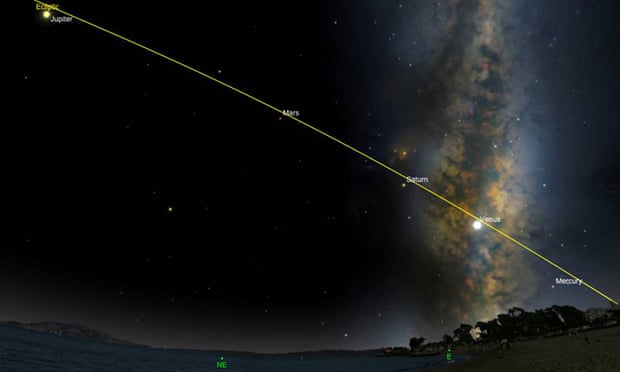NASA Kepler Space Telescope observed growth of the supernova within the star KSN 2011d
NASA Kepler space telescope, inspecting as many as 50 trillion stars in the process. During that study, they came across a shock breakout event occurring within the star KSN 2011d. You can see the short burst of brightness in the graph below, which occurs before the steady increase associated with the growth of the supernova.
NASA researchers analyzed some 50 trillion stars photographed by Kepler over a three-year period, searching for supernova
NASA’s planet hunter, the Kepler space telescope, has captured the brilliant flash of an exploding star’s shock wave-what astronomers call the “shock breakout” of a supernova- for the first time in visible light wavelengths. An international science team, including two astronomers from the University of Maryland, analyzed light captured by Kepler every 30 minutes over a three-year period, searching some 50 trillion stars spread across 500 distant galaxies. The astronomers were hunting for signs of massive stellar death explosions known as supernovae.”
“Like police getting surveillance footage of a crime after the event, we can study brightness histories from Kepler to find out what was happening in the exact hour that the shock wave from the stellar core reached the surface of the star,” said Edward Shaya, an associate research scientist in astronomy at UMD and a co-author on the study. “These events are bright enough that they change the brightness of the whole galaxy by a measurable amount.”
“It lasted only 20 minutes and took place 1.2 billion light years away, but NASA managed to catch it on camera: a star exploding. The brilliant flash of an exploding star’s shockwave — or “shock breakout” — has been captured for the first time in visible light by the Kepler space telescope,” according to a news report published by CNN.
A supernova occurs at the end of a massive star’s life, as a colossal, catastrophic explosion erupts, causing the star to burn brighter than some galaxies for around two weeks before fading to black. The team analyzing the Kepler data found exactly what they were looking for: a red supergiant 500 times the size of our sun and around 1.2 billion light years away exploded while in the telescope’s view.
The team analyzing the Kepler data found exactly what they were looking for: a red supergiant 500 times the size of our sun and around 1.2 billion light years away exploded while in the telescope’s view.
Getting to grips with how and why these events occur is an important part of understanding the formation of our Universe. “All heavy elements in the universe come from supernova explosions. For example, all the silver, nickel, and copper in the earth and even in our bodies came from the explosive death throes of stars,” explained Steve Howell, one of the researchers, in a press release. “Life exists because of supernovae.”
Even so, once the collapse begins, the star’s stuff inrushes so fast that “you’re talking about minutes to maybe an hour” before it hits the limit and generates the shockwave. That’s one reason, Tucker told The Register, that the process hasn’t been seen before. “If you monitor from the ground, you have the sun, the rotation of the Earth, clouds, weather – you might only see something once per night.”
That’s what made Kepler vital to seeing the shockwave: “Kepler was monitoring the same patch of sky every 30 minutes”, Tucker explained. “It doesn’t download all of its pixels, because that’s too much data for its bandwidth,” he continued – so the team had to get time for a specific supernova-hunting mission. “What we had to do was select 500 galaxies and hope we got a supernova.”
In In a normal galaxy ,supernovae will occur every 100 to 200 years
So a year-long mission watching 500 galaxies “stacked the deck” enough to make it likely one would be observed. The two supernovae that were eventually spotted are KSN 2011a (700 million light years away, 300 times the size of the sun) and KSN 2011d (1.2 billion light years away, 500 times the size of the sun).
Interestingly, the smaller of these didn’t show a shockwave. According to this
NASA that might be because it’s surrounded by gas that obscured the event.
Tucker added that the repurposed K2 mission should catch more such events, since he said it will be able to watch thousands of galaxies instead of a select few.
Lead researcher Peter Garnavich, an astrophysics professor at the University of Notre Dame, said in a statement that the star is so colossal that “Earth’s orbit around the sun would fit comfortably within (it).”



 I'll even throw in a
I'll even throw in a  .
.